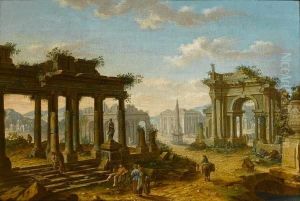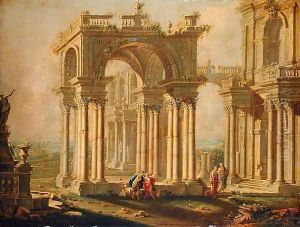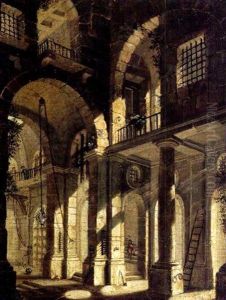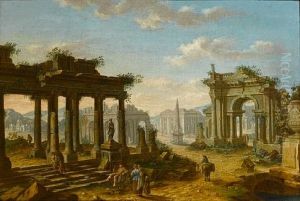Josef Platzer Paintings
Josef Platzer was an Austrian painter and scenic designer, recognized for his contributions to the Rococo and early Neoclassical movements. Born on March 22, 1751, in Passau, Germany, Platzer was part of a family with strong artistic roots; his father, Christoph Platzer, was also a painter, which influenced Josef's early exposure to the arts.
During his career, Josef Platzer became well-known for his ceiling and fresco paintings which adorned many palaces and churches across Europe. His work is characterized by dynamic compositions, a rich palette, and a masterful depiction of light and shadow, reflecting the transition from the Rococo to the Neoclassicism style.
Platzer received his formal art education at the Academy of Fine Arts Vienna, where he refined his painting and engraving skills. He was heavily involved in the decoration of theatres and was recognized for his skill in stage set design as well. This led to his work as a theatrical painter and designer, where he created elaborate set designs that were celebrated for their intricate details and illusionistic qualities. Platzer's stage designs contributed to the development of the visual aspect of theatre at the time, blending art with performance.
Throughout his life, Josef Platzer remained an active figure in the art world, contributing to various significant projects, including the design of the historical Schwarzenberg Palace's theatre in Prague. Unfortunately, despite his talent and influence, Platzer did not gain the same level of fame as some of his contemporaries. He passed away on August 6, 1806, leaving behind a legacy that would be appreciated by art historians and enthusiasts in the centuries to come. His works continue to be studied and admired for their beauty and historical significance in the evolution of European art.




















